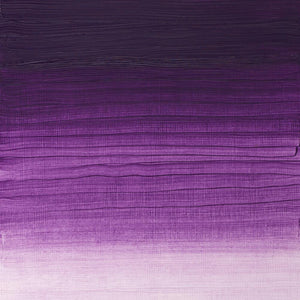
Did you know that mauve was made completely by mistake? The rich violet-colour was born from the ambition and curiosity of a bright teenager, and his serendipitous scientific accident. Discover the pigment’s remarkable story that begins humbly with this 15-year-old chemistry student, and goes on to feature Oscar Wilde and Queen Victoria.
In 1856, William Henry Perkin was studying at the Royal College of Chemistry (now Imperial College London). In his attempt to help find a more affordable treatment for malaria, Perkin was synthesising quinine from coal tar. At the time, quinine was valuable because it was the only treatment for malaria, but it was also very expensive. Perkin’s tutor, renowned chemist August Wilhelm von Hofmann, was therefore looking to create a synthetic quinine.
Unfortunately, his student failed in this endeavour – instead, Perkin came upon another discovery in what would become a very happy accident. Perkin had in fact dreamed of becoming an artist before he became a chemist. So he was particularly fascinated to find that, when he was cleaning a beaker one day, his cloth turned purple. When he had wiped away the black residue from his latest failure to produce quinine, he had inadvertently made a purple dye. Not only that, but it proved to be wash-proof.
Perkin decided to keep this discovery to himself. A natural businessman, he saw the potential for this newly invented colour in the industrial age that was emerging. Luckily, Perkin had been experimenting at his family home during his school break in London, so he was able to keep his synthetic creation a secret from Hofmann.
He called the new colour ‘mauveine’, which later became ‘mauve’, and set to work, conducting experiments that would ensure mauve was stable when it was used to dye silk fabrics and washed or exposed to light. Satisfied, Perkin sent samples to a dye works to confirm his findings. His results were verified, and he filed for a patent when he was just 18.
During the Victorian era in Europe, mauve became an iconic fashion statement. Mauve fabrics for women were in demand – a trend that intensified when Napoleon III’s wife, the Empress Eugénie, took to wearing the colour. She had decided the colour matched her eyes, and so ordered her dresses to be dyed in the shade. Queen Victoria herself then appeared at the Royal Exhibition of 1862 in an elaborate gown dyed with Perkin's mauve, which only added to public demand.
Mauve was a success – and so was its inventor. By 21, Perkin was exceptionally wealthy. He owned a dye manufacturing facility, where he continued to experiment with anilines to discover new colours.
The London fashion scene was totally consumed with mauve for a time, but it gradually faded in popularity among younger generations. This led to phrases such as ‘mauve measles on London’. Oscar Wilde put the final nail in the coffin when he wrote cuttingly in his 1890 novel, The Picture of Dorian Gray: ‘Never trust a woman who wears mauve. It always means they have a history.’
As a pigment, however, Permanent Mauve has never gone out of fashion. Our modern formulation is a lightfast, semi-transparent single pigment colour that artists have enjoyed for decades. And so Sir William Henry Perkin has gone down in history as an unexpected revolutionary in art and fashion.




![W&N BLACK FINELINER LS 0.1 [CAP ON]](http://uk.winsornewton.com/cdn/shop/files/64128.jpg?crop=center&v=1736866967&width=20)
![WN COTMAN 8 PC FLORAL POCKET BOX [OPEN WITH STICKER] 884955081129](http://uk.winsornewton.com/cdn/shop/files/132624.jpg?crop=center&v=1761839596&width=20)
![W&N COTMAN WATERCOLOUR 8HP FLORAL POCKET SET [FRONT]](http://uk.winsornewton.com/cdn/shop/files/97499.jpg?crop=center&v=1760698026&width=20)

![WN PROMARKER COOL GREY 3 [COMPOSITE] 884955041406](http://uk.winsornewton.com/cdn/shop/files/77586.jpg?crop=center&v=1741263144&width=20)

![W&N SERIES 7 KOLINSKY SABLE BRUSH ROUND [SHORT HANDLE]](http://uk.winsornewton.com/cdn/shop/files/11424.jpg?crop=center&v=1762864605&width=20)
![W&N GALERIA ACRYLIC TUBE 60ML TITAN WHITE 08 [COMPOSITE] 094376914061](http://uk.winsornewton.com/cdn/shop/files/9396.jpg?crop=center&v=1714072593&width=20)
![W&N GALERIA [SWATCH] TITANIUM WHITE](http://uk.winsornewton.com/cdn/shop/files/3097.jpg?crop=center&v=1714072593&width=20)
![W&N GALERIA CARDBOARD SET 10X12ML 884955097809 [OPEN]](http://uk.winsornewton.com/cdn/shop/files/138856.jpg?crop=center&v=1725031476&width=20)
![W&N GALERIA CARDBOARD SET 10X12ML [B014096] 884955097809 [FOP]](http://uk.winsornewton.com/cdn/shop/files/138855.jpg?crop=center&v=1725031475&width=20)